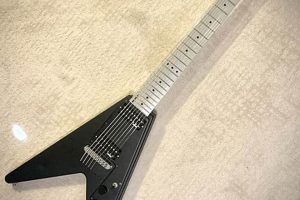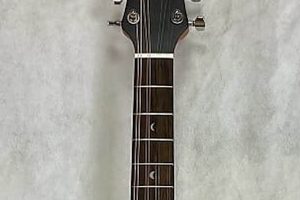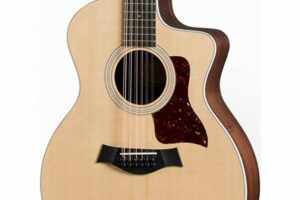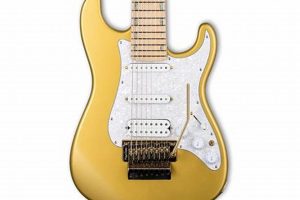If you’re looking for a guitar with a bright, clear sound and plenty of volume, a steel string guitar is a great option. These guitars are typically made with a spruce or cedar top and mahogany or rosewood back and sides. The strings are made of steel, which gives them a brighter sound than nylon strings. Steel string guitars are also known for their durability, making them a good choice for players who want a guitar that will last.
Editor’s Notes: Steel String Guitars
We understand the importance of finding the right guitar for your needs. That’s why we’ve done the research and put together this steel string guitar guide to help you make the right decision. Whether you’re a beginner or a seasoned pro, we have something for everyone.
| Steel String Guitars | |
|---|---|
| Body Shape | Steel string guitars come in a variety of body shapes, including dreadnought, jumbo, and parlor. The shape of the body affects the sound of the guitar, with dreadnoughts producing a louder, fuller sound than parlors. |
| Tonewoods | The type of wood used in the construction of a steel string guitar also affects the sound. Spruce is a common choice for the top of the guitar, as it produces a bright, clear sound. Mahogany and rosewood are popular choices for the back and sides of the guitar, as they produce a warm, rich sound. |
| Electronics | Many steel string guitars are equipped with electronics, which allow you to plug the guitar into an amplifier or PA system. This is a great option for players who want to play in a band or perform live. |
Now that you know a little more about steel string guitars, you can start shopping for the perfect one for you. Be sure to consider your budget, playing style, and the type of music you want to play. With so many great options on the market, you’re sure to find the perfect steel string guitar for your needs.
1. Body Shape
The body shape of a steel string guitar is one of the most important factors that affects its sound. The shape of the body determines the size of the sound chamber, which in turn affects the guitar’s volume, tone, and sustain. There are many different body shapes available, each with its own unique sound. Some of the most popular body shapes for steel string guitars include:
- Dreadnought – The dreadnought is the most popular body shape for steel string guitars. It is known for its loud, powerful sound, which is well-suited for strumming and flatpicking.
- Jumbo – The jumbo body shape is similar to the dreadnought, but it is larger and has a more rounded shape. This gives it a warmer, fuller sound than the dreadnought.
- Grand Auditorium – The grand auditorium body shape is a smaller, more comfortable version of the dreadnought. It has a balanced sound that is well-suited for both strumming and fingerpicking.
- Concert – The concert body shape is the smallest of the popular steel string guitar body shapes. It has a clear, articulate sound that is well-suited for fingerpicking and delicate strumming.
The body shape of a steel string guitar is a matter of personal preference. There is no right or wrong answer, so it is important to try out different body shapes to see what feels and sounds best to you.
2. Tonewoods
When it comes to steel string guitars, the type of wood used for the body and neck can have a significant impact on the sound of the instrument. Some of the most popular tonewoods for steel string guitars include spruce, mahogany, and rosewood.
- Spruce is a lightweight wood with a bright, clear sound. It is often used for the tops of steel string guitars, as it helps to produce a balanced sound with plenty of volume and projection.
- Mahogany is a heavier wood with a warm, rich sound. It is often used for the backs and sides of steel string guitars, as it helps to produce a full, resonant sound with plenty of sustain.
- Rosewood is a dense wood with a deep, complex sound. It is often used for the backs and sides of steel string guitars, as it helps to produce a warm, mellow sound with plenty of sustain and projection.
The choice of tonewoods is ultimately a matter of personal preference. However, by understanding the different tonal qualities of different woods, you can make an informed decision about the best guitar for your needs.
3. Electronics
Electronics play an increasingly important role in the design and construction of steel string guitars. By incorporating electronic components, guitar makers can enhance the sound, playability, and versatility of their instruments.
- Pickups
Pickups are transducers that convert the vibrations of the guitar strings into electrical signals. These signals can then be amplified and processed to create a wide range of sounds. There are two main types of pickups used on steel string guitars: magnetic pickups and piezoelectric pickups. Magnetic pickups are the most common type, and they work by sensing the changes in the magnetic field created by the vibrating strings. Piezoelectric pickups work by sensing the physical vibrations of the strings. Both types of pickups have their own unique sound, and the choice of pickup depends on the desired sound.
- Preamplifiers
Preamplifiers are electronic circuits that boost the signal from the pickups and shape the tone of the guitar. Preamplifiers can be built into the guitar itself or they can be housed in a separate unit. Preamplifiers typically include controls for volume, tone, and EQ. Some preamps also include effects such as reverb, chorus, and delay.
- Tuners
Electronic tuners are used to tune the guitar’s strings. Tuners can be built into the guitar itself or they can be purchased as separate units. Electronic tuners are more accurate than traditional mechanical tuners, and they can be used in noisy environments.
- Other Electronics
In addition to the above components, steel string guitars may also be equipped with a variety of other electronic devices, such as EQs, compressors, and limiters. These devices can be used to further shape the sound of the guitar and to improve its playability.
Electronics can greatly enhance the sound, playability, and versatility of steel string guitars. By understanding the different types of electronics available, guitarists can choose the right components to create the perfect sound for their needs.
4. String Gauge
String gauge is an important factor to consider when choosing a steel string guitar. The gauge of a string refers to its thickness. Thicker strings produce a louder, fuller sound, while thinner strings produce a brighter, more articulate sound. The gauge of the strings also affects the playability of the guitar. Thicker strings are more difficult to bend and fret, while thinner strings are easier to play. Generally, beginner guitarists will find it easier to play guitars with a lighter string gauge.
There are many different string gauges available, so it is important to experiment to find the right gauge for your needs. If you are unsure what gauge to choose, a good starting point is to use a medium gauge string set. Medium gauge strings are a good compromise between volume, tone, and playability.
Here is a table summarizing the key differences between different string gauges:
| String Gauge | Sound | Playability |
|---|---|---|
| Light | Brighter, more articulate | Easier to play |
| Medium | Balanced sound | Moderate playability |
| Heavy | Louder, fuller sound | More difficult to play |
Ultimately, the best way to find the right string gauge for your steel string guitar is to experiment. Try different gauges and see what sounds and feels best to you.
5. Playing Style
The playing style of a guitarist has a significant impact on the sound of a steel string guitar. There are many different playing styles, each with its own unique techniques and nuances. Some of the most common playing styles for steel string guitars include:
- Fingerpicking – Fingerpicking is a technique that involves using the fingers to pluck the strings of the guitar. Fingerpicking can be used to create a wide range of sounds, from delicate arpeggios to complex melodies.
- Flatpicking – Flatpicking is a technique that involves using a flatpick to strum or pick the strings of the guitar. Flatpicking is often used for strumming chords and playing lead guitar.
- Hybrid picking – Hybrid picking is a technique that combines fingerpicking and flatpicking. Hybrid picking allows guitarists to create a wider range of sounds and textures.
- Slide guitar – Slide guitar is a technique that involves using a slide to play the strings of the guitar. Slide guitar is often used to create bluesy and rock sounds.
The playing style of a guitarist is a matter of personal preference. However, by understanding the different playing styles, guitarists can develop their own unique sound.
| Playing Style | Techniques | Sounds | Examples |
|---|---|---|---|
| Fingerpicking | Using the fingers to pluck the strings | Delicate arpeggios, complex melodies | Tommy Emmanuel, Chet Atkins |
| Flatpicking | Using a flatpick to strum or pick the strings | Strumming chords, playing lead guitar | Doc Watson, Tony Rice |
| Hybrid picking | Combining fingerpicking and flatpicking | Wide range of sounds and textures | Mark Knopfler, Andy McKee |
| Slide guitar | Using a slide to play the strings | Bluesy and rock sounds | Duane Allman, Derek Trucks |
The connection between playing style and steel string guitar is a complex one. However, by understanding the different playing styles and how they affect the sound of the guitar, guitarists can develop their own unique sound and become more versatile players.
6. Music Genre
The music genre is closely connected to the steel string guitar. Different genres of music have their own unique sound, and the steel string guitar can be used to create a wide range of sounds to match those genres.
For example, the steel string guitar is often used in country music. The bright, clear sound of the steel strings is a good match for the twangy sound of country music. The steel string guitar is also used in folk music, blues, and rock music. In folk music, the steel string guitar is often used for strumming chords and fingerpicking. In blues music, the steel string guitar is often used for slide guitar playing. In rock music, the steel string guitar is often used for both rhythm and lead guitar.
The steel string guitar is a versatile instrument that can be used to play a wide range of genres of music. By understanding the connection between music genre and the steel string guitar, guitarists can choose the right guitar and playing style to create the sound they want.
| Music Genre | Sound | Steel String Guitar Techniques | Examples |
|---|---|---|---|
| Country | Twangy, bright | Strumming, fingerpicking | Johnny Cash, Hank Williams |
| Folk | Acoustic, mellow | Strumming, fingerpicking, slide guitar | Bob Dylan, Joan Baez |
| Blues | Emotional, expressive | Slide guitar, fingerpicking | B.B. King, Muddy Waters |
| Rock | Loud, distorted | Strumming, flatpicking, hybrid picking | Eric Clapton, Jimi Hendrix |
These are just a few examples of the many different genres of music that can be played on the steel string guitar. With its versatility and wide range of sounds, the steel string guitar is a great choice for guitarists of all levels and styles.
7. Price
The price of a steel string guitar can vary greatly depending on a number of factors, including the brand, the materials used, and the level of craftsmanship. However, there are some general trends that can be observed.
- Entry-level guitars
Entry-level steel string guitars are typically made with less expensive materials, such as laminated wood, and may have fewer features than more expensive guitars. They are a good option for beginners who are not sure if they want to stick with the instrument, or for those who are on a budget.
- Mid-range guitars
Mid-range steel string guitars are typically made with better materials, such as solid wood, and may have more features than entry-level guitars. They are a good option for intermediate players who are serious about learning the instrument.
- High-end guitars
High-end steel string guitars are typically made with the best materials and craftsmanship available. They are often used by professional musicians and serious hobbyists.
Ultimately, the best way to determine the right price for a steel string guitar is to consider your
own needs and budget. If you are just starting out, an entry-level guitar may be a good option. As you progress in your playing, you may want to upgrade to a mid-range or high-end guitar.
8. Brand
The brand of a steel string guitar can have a significant impact on its sound, playability, and value. Some of the most popular and respected brands of steel string guitars include:
These brands have a long history of making high-quality guitars, and their instruments are used by professional musicians around the world.
When choosing a steel string guitar, it is important to consider the brand’s reputation and the specific model of guitar that you are interested in. Different brands have different strengths and weaknesses, so it is important to do your research before making a purchase.
Here is a table summarizing the key differences between the five brands of steel string guitars mentioned above:
| Brand | Sound | Playability | Value |
|---|---|---|---|
| Martin | Warm, rich, and balanced | Excellent | High |
| Gibson | Bright, powerful, and cutting | Good | High |
| Taylor | Clear, articulate, and modern | Excellent | High |
| Fender | Twangy, bright, and versatile | Good | Moderate |
| Collings | Warm, resonant, and complex | Excellent | Very high |
Ultimately, the best way to choose a steel string guitar is to play several different models and see which one feels and sounds the best to you.
9. Accessories
Accessories play an important role in enhancing the sound, playability, and overall experience of playing a steel string guitar. From picks and strings to capos and tuners, there is a wide range of accessories available to guitarists of all levels.
- Picks
Picks are used to pluck the strings of the guitar. They come in a variety of shapes, sizes, and materials, each with its own unique sound and feel. Some of the most popular materials for picks include plastic, nylon, and metal.
- Strings
Strings are an essential part of any guitar, and the type of strings you use can have a significant impact on the sound of your instrument. Steel string guitars typically use steel strings, which are available in a variety of gauges. The gauge of a string refers to its thickness, and thicker strings produce a louder, fuller sound, while thinner strings produce a brighter, more articulate sound.
- Capos
Capos are used to change the pitch of the guitar strings. They are typically placed on the neck of the guitar, and they can be used to raise or lower the pitch of the strings by one or more semitones. Capos are a great way to change the key of a song or to create new and interesting sounds.
- Tuners
Tuners are used to tune the strings of the guitar. They are available in a variety of formats, including clip-on tuners, pedal tuners, and rackmount tuners. Tuners are essential for keeping your guitar in tune, and they can also be used to experiment with different tunings.
These are just a few of the many accessories available for steel string guitars. By understanding the different types of accessories and how they can be used, guitarists can enhance their playing experience and get the most out of their instruments.
10. Maintenance
Proper maintenance is essential to keep your steel string guitar in good playing condition. By following a few simple steps, you can extend the life of your guitar and ensure that it always sounds its best.
One of the most important things you can do to maintain your guitar is to clean it regularly. This will remove dirt, dust, and other debris that can build up on the guitar’s surface and affect its sound. To clean your guitar, simply wipe it down with a soft, dry cloth. You can also use a guitar polish to help protect the finish.
Another important aspect of guitar maintenance is to keep the strings clean. Dirty strings can produce a dull sound and make it more difficult to play. To clean your strings, simply wipe them down with a soft cloth. You can also use a string cleaner to help remove dirt and grime.In addition to cleaning your guitar and strings, you should also periodically check the guitar’s setup. This includes checking the intonation, the action, and the neck relief. If any of these adjustments are out of spec, it can affect the playability of the guitar. You can either adjust the setup yourself or take your guitar to a qualified technician to have it done.By following these simple maintenance tips, you can keep your steel string guitar in good playing condition for years to come.
Here is a table summarizing the key maintenance tasks for a steel string guitar:
| Task | Frequency |
|---|---|
| Clean the guitar | Monthly |
| Clean the strings | Weekly |
| Check the setup | Every 6 months |
11. History
The steel string guitar is a relatively modern invention, with its origins in the late 19th century. However, the history of the guitar itself can be traced back much further, to the early Middle Ages. The first guitars were brought to the Americas by Spanish explorers in the 16th century, and they quickly became popular throughout the continent.
- The Birth of the Steel String Guitar
The steel string guitar was invented in the late 19th century by a German immigrant named Christian Frederick Martin. Martin was a cabinet maker who began making guitars as a hobby. In 1833, he opened a guitar shop in New York City, and he soon began experimenting with different materials and designs. In 1850, he developed a new type of guitar with a steel string, which produced a brighter and louder sound than the traditional gut strings.
- The Rise of the Steel String Guitar
The steel string guitar quickly gained popularity among folk and blues musicians. It was louder and more durable than the traditional gut string guitar, and it could be played with a variety of techniques. In the early 20th century, the steel string guitar became the dominant type of guitar used in country and western music. It was also used by early jazz musicians, and it eventually became the standard guitar for rock and roll.
- The Steel String Guitar Today
Today, the steel string guitar is the most popular type of guitar in the world. It is used in a wide variety of genres of music, from country to rock to jazz. Steel string guitars are also used in
classical music, and they are often used for solo performances.
The steel string guitar has had a profound impact on the history of music. It is a versatile and durable instrument that can be used to create a wide range of sounds. It is no wonder that the steel string guitar has become the most popular type of guitar in the world.
12. Popularity
The steel string guitar is one of the most popular guitars in the world. It is used in a wide variety of genres of music, from country to rock to jazz. There are many reasons for the popularity of the steel string guitar, including its versatility, durability, and affordability.
One of the reasons for the popularity of the steel string guitar is its versatility. The steel string guitar can be used to play a wide range of musical styles, from delicate fingerpicking to heavy strumming. It is also a good choice for both rhythm and lead guitar playing.
Another reason for the popularity of the steel string guitar is its durability. Steel strings are less likely to break than nylon strings, and they can withstand the rigors of heavy playing. This makes the steel string guitar a good choice for musicians who play frequently or who perform in a variety of settings.
The steel string guitar is also a relatively affordable instrument. This makes it a good choice for beginners who are on a budget. However, there are also many high-quality steel string guitars available for more experienced players.
The popularity of the steel string guitar is due to a number of factors, including its versatility, durability, and affordability. This makes it a good choice for a wide range of musicians, from beginners to professionals.
Here is a table summarizing the key insights about the popularity of the steel string guitar:
| Factor | Importance |
|---|---|
| Versatility | The steel string guitar can be used to play a wide range of musical styles. |
| Durability | Steel strings are less likely to break than nylon strings, and they can withstand the rigors of heavy playing. |
| Affordability | The steel string guitar is a relatively affordable instrument. |
FAQs about Steel String Guitars
This section answers some of the most frequently asked questions about steel string guitars.
Question 1: What is a steel string guitar?
A steel string guitar is a type of guitar that uses steel strings instead of nylon strings. Steel strings produce a brighter and louder sound than nylon strings, and they are also more durable.
Question 2: What are the benefits of playing a steel string guitar?
There are many benefits to playing a steel string guitar, including:
- Brighter and louder sound
- More durable strings
- Versatility (can be used to play a wide range of musical styles)
Question 3: What are the different types of steel string guitars?
There are many different types of steel string guitars, including:
- Acoustic guitars
- Electric guitars
- Classical guitars
- Resonator guitars
Question 4: What is the best steel string guitar for beginners?
The best steel string guitar for beginners is one that is comfortable to play and has a good sound. Some good options for beginners include:
- Yamaha FG800
- Fender Squier Stratocaster
- Epiphone Les Paul Special
Question 5: How do I care for my steel string guitar?
To care for your steel string guitar, you should:
- Store it in a cool, dry place.
- Clean it regularly with a soft cloth.
- Change the strings regularly.
- Have it professionally serviced once a year.
Question 6: Where can I learn more about steel string guitars?
There are many resources available to learn more about steel string guitars, including books, websites, and online forums. You can also find many helpful videos on YouTube.
We hope this FAQ section has been helpful. If you have any other questions, please feel free to contact us.
Next:
Steel String Guitar Tips
Whether you’re a beginner or a seasoned pro, there are always ways to improve your playing. Here are a few tips to help you get the most out of your steel string guitar:
Tip 1: Choose the right guitar.
The first step to becoming a great guitarist is to choose the right instrument. There are many different types of steel string guitars available, so it’s important to do your research and find one that fits your playing style and budget.
Tip 2: Learn the basics.
Once you have a guitar, it’s time to learn the basics. This includes learning how to hold the guitar, how to strum, and how to play basic chords. There are many resources available to help you learn the basics, including books, websites, and online lessons.
Tip 3: Practice regularly.
The key to becoming a good guitarist is to practice regularly. Try to practice for at least 30 minutes each day. As you practice, you’ll start to develop your own style and sound.
Tip 4: Experiment with different sounds.
One of the great things about steel string guitars is that they can be used to create a wide range of sounds. Experiment with different tunings, different picking techniques, and different effects pedals to find your own unique sound.
Tip 5: Learn from others.
One of the best ways to improve your playing is to learn from others. Take lessons from a qualified guitar teacher, attend workshops, and jam with other guitarists. You can also learn a lot by watching videos of great guitarists.
Tip 6: Have fun!
Playing guitar should be enjoyable. If you’re not having fun, you’re less likely to stick with it. So make sure to find music that you enjoy playing, and experiment with different ways to play it.
By following these tips, you can become a better steel string guitarist and enjoy playing music for years to come.
Summary of key takeaways or benefits:
- Choosing the right guitar will help you get the most out of your playing.
- Learning the basics is essential for becoming a good guitarist.
- Practicing regularly will help you develop your own style and sound.
- Experimenting with different sounds will help you find your own unique voice.
- Learning from others can help you improve your playing.
- Having fun is essential for sticking with the guitar and enjoying playing music.
Conclusion
The steel string guitar is a versatile and popular instrument that can be used to play a wide range of musical styles. It is a great choice for beginners and experienced players alike. If you are looking for a guitar that is durable, versatile, and affordable, then a steel string guitar is a great option.
In this article, we have explored the many aspects of steel string guitars, including their history, popularity, and benefits. We have also provided some tips to help you get the most out of your steel string guitar. We hope that you have found this article informative and helpful.
As we conclude, it is important to remember that the steel string guitar is a powerful tool that can be used to create beautiful music. With practice and dedication, you can le
arn to play the steel string guitar and enjoy the many benefits that it has to offer.
Youtube Video:








